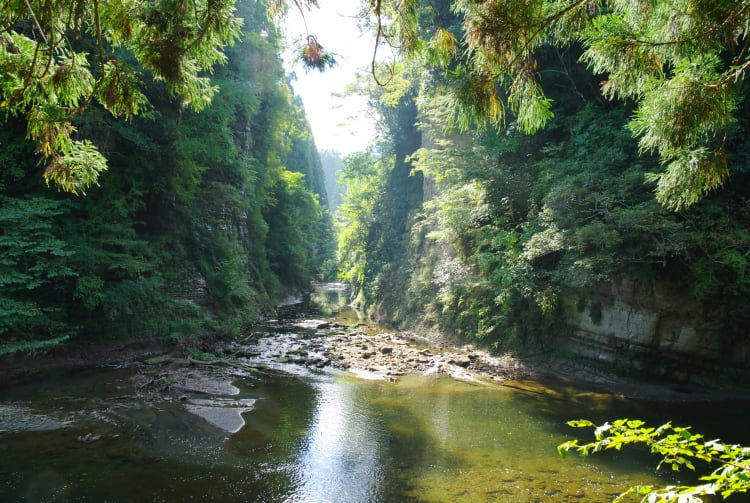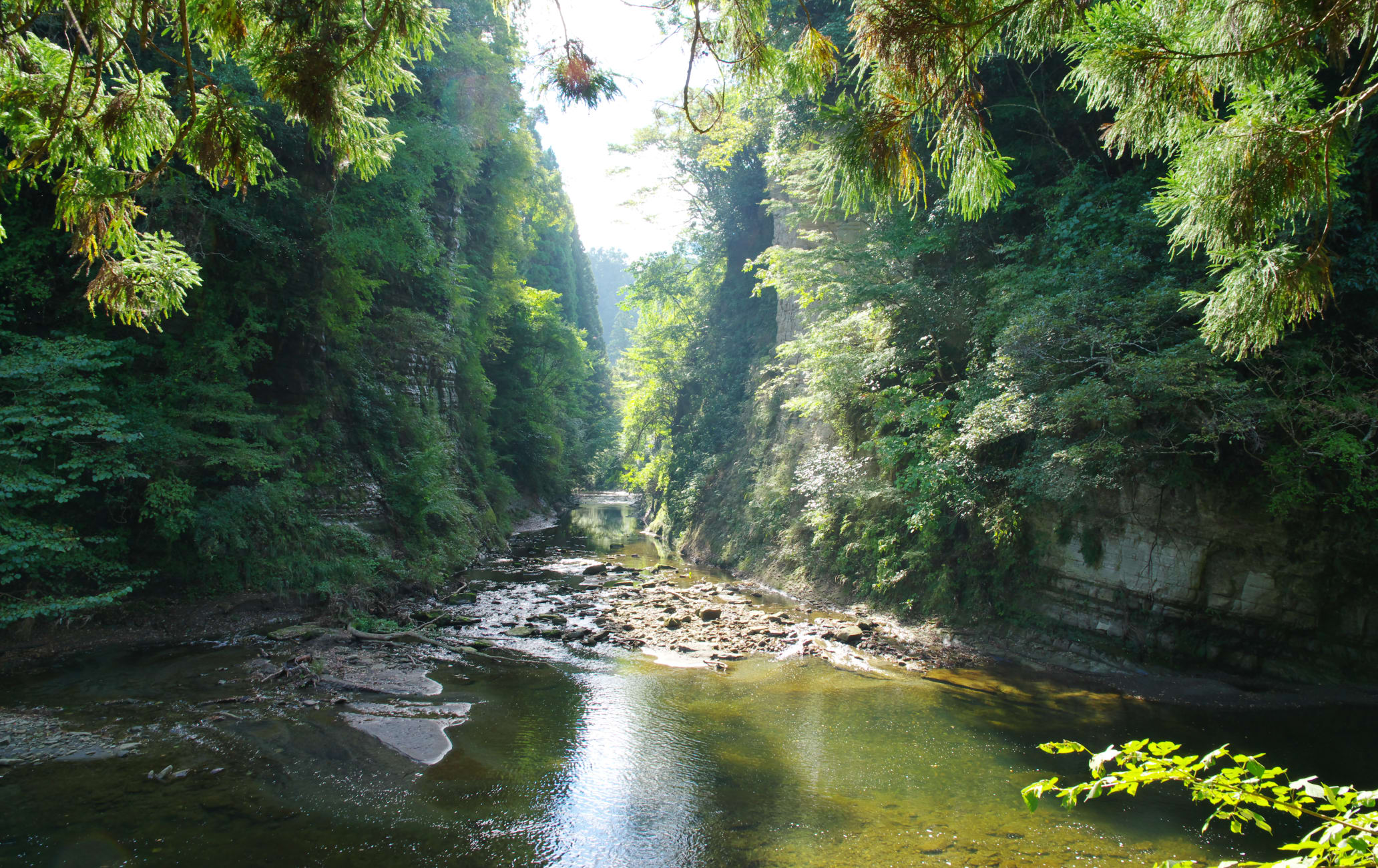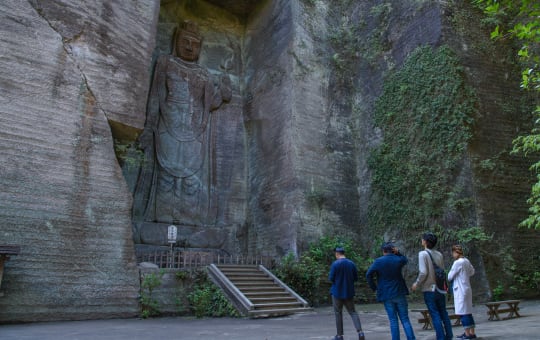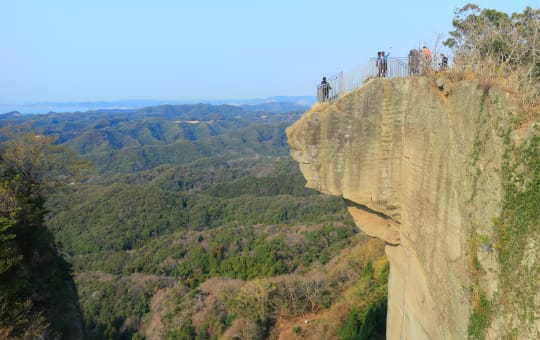Discover Yoro-Keikoku Valley—one of Chiba's best-kept hiking secrets
The Yoro-Keikoku Valley and the Yoro River is an area of Chiba just waiting to be explored.
Don't Miss
- The Yoro-Keikoku Valley—a mecca for hikers and nature lovers
- Awamata no Taki—Chiba's biggest waterfall
- The area's mysterious black hot springs
How to Get There
The Yoro-Keikoku Valley is just south of the center of the Boso Peninsula, and is accessible by train or car.
Yoro-Keikoku Station is on the Kominato Line. To get there by train, take the Keiyo Line from Tokyo to Soga. Change at Soga to the Uchibo Line and change to the Kominato Line at Goi Station. The journey should take between two to three hours. You can also reach the park by driving the Aqua Line to Kisarazu.

The Yoro-Keikoku Valley, a hiking haven
The Yoro River winds through the center of the Boso Peninsula , south of the Kominato Railway to the Pacific Ocean, creating the lush and rugged Yoro-Keikoku Valley. The roaring river is flanked by steep hills covered in dense forest. Although close to both Tokyo and Chiba, the valley is a lesser known Chiba Prefecture attraction.
The entrance to the valley is Yoro-Keikoku Station on the Kominato Railway Line. From there, the valley stretches six kilometers to the south, ending at Otaki, home of one of Chiba's most famous castles, Otaki Castle.

©kominatorailway
The beauty of the valley in fall
The best time to visit the valley is during the fall when the autumn leaves are brilliant red, yellow and gold. The colorful leaves create a canopy over the valley and its river. The momiji (Japanese maple trees) are in abundance here and a fall festival is hosted in celebration of them.
Four seasons of brilliant color all year round
The valley is gorgeous at other times of year, too. During the spring, it's an excellent place to enjoy the blooming cherry blossoms and azaleas. Summer offers hiking and other activities around the river. In winter, icicles hang from the rocks.


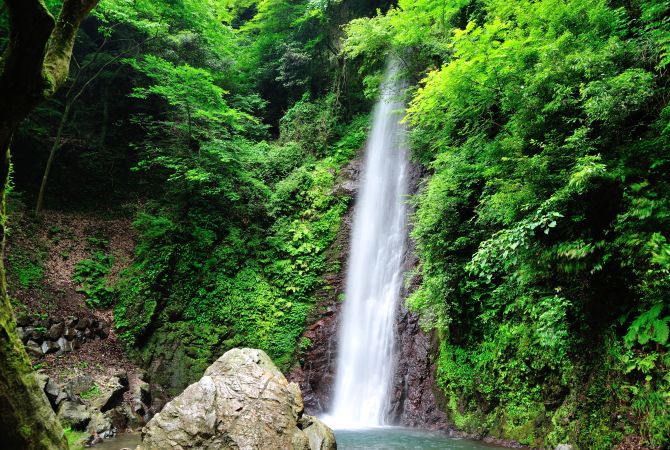

©kominatorailway
Visit Chiba's biggest waterfall
The park is best known for its waterfalls, including Awamata no Taki, Chiba's biggest waterfall. From a height of 30 meters, its water cascades down a fascinating collection of stair-like rocks.
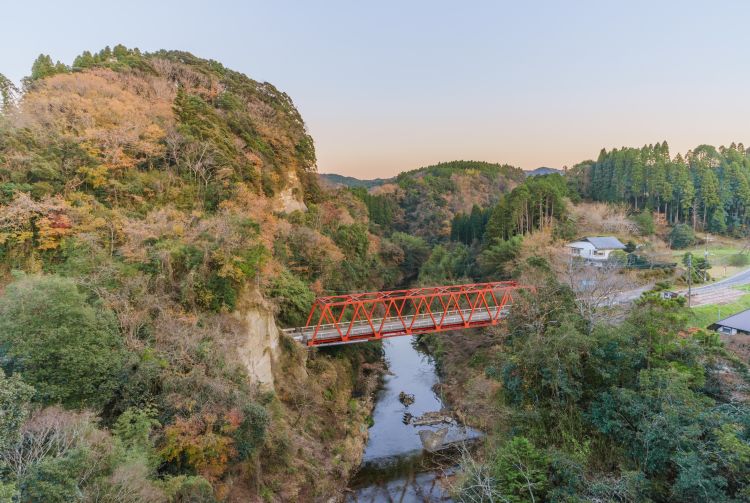
Walking trails at Yoro-Keikoku Valley
The valley's walking trails make it a mecca for hikers. One particularly popular trail extends just under two kilometers right along the banks of the Yoro River.
Some rocks form a bridge-like path that can be used to cross the river. Part of the trail passes right by the valley's most famous waterfall. This course takes about three hours but there are many shorter hiking courses as well. The valley presents a variety of trails of all lengths and levels of difficulty.
The hidden temple
At one part of the river is Shusse Kannon Rikkokuji Temple, a small temple built during the 12th century that ancient Japanese military commanders prayed at for success in battle. The temple is at a scenic spot with lush foliage on its grounds, including plum trees that bloom in February.
Crossing the scenic Kannon bridge
To get to the temple, you have to cross the Kannon Bridge. The bridge is the same vermillion color that you see at temples and shrines and offers views of the river and the steep tree-covered hills on either side.
Go further by soaking in the area's black hot springs
Near Yoro-Keikoku Station are resorts with Japanese-style ryokan and hot springs. The hot springs here are unique kuroyu, or black hot springs. The surprisingly black color is caused by organic plant material in the soil.




















































